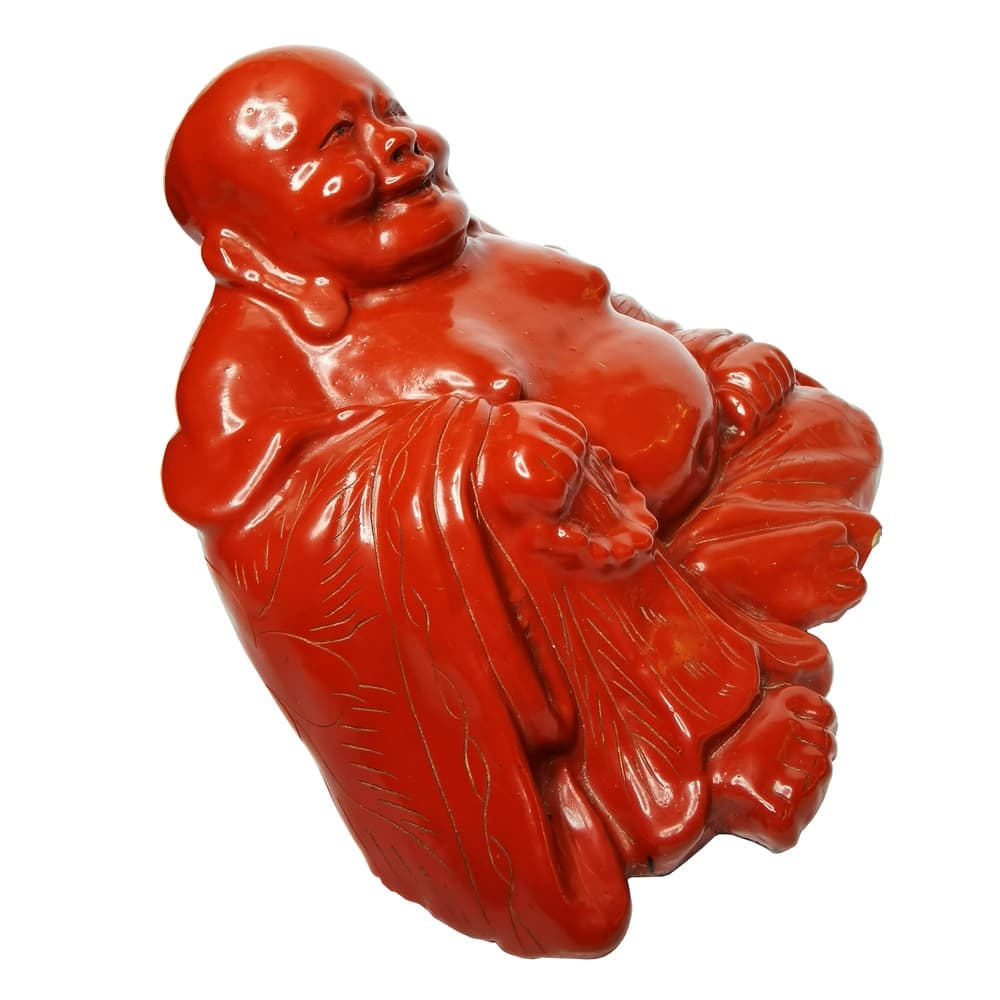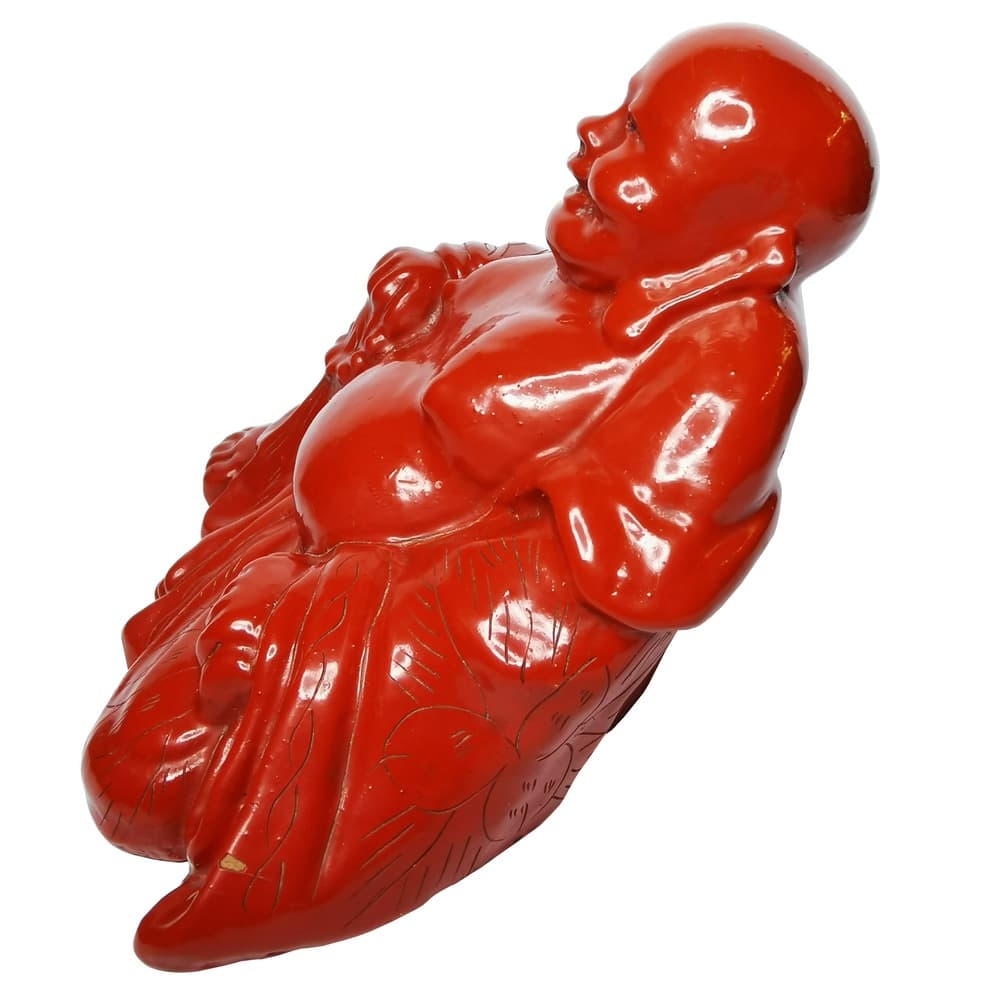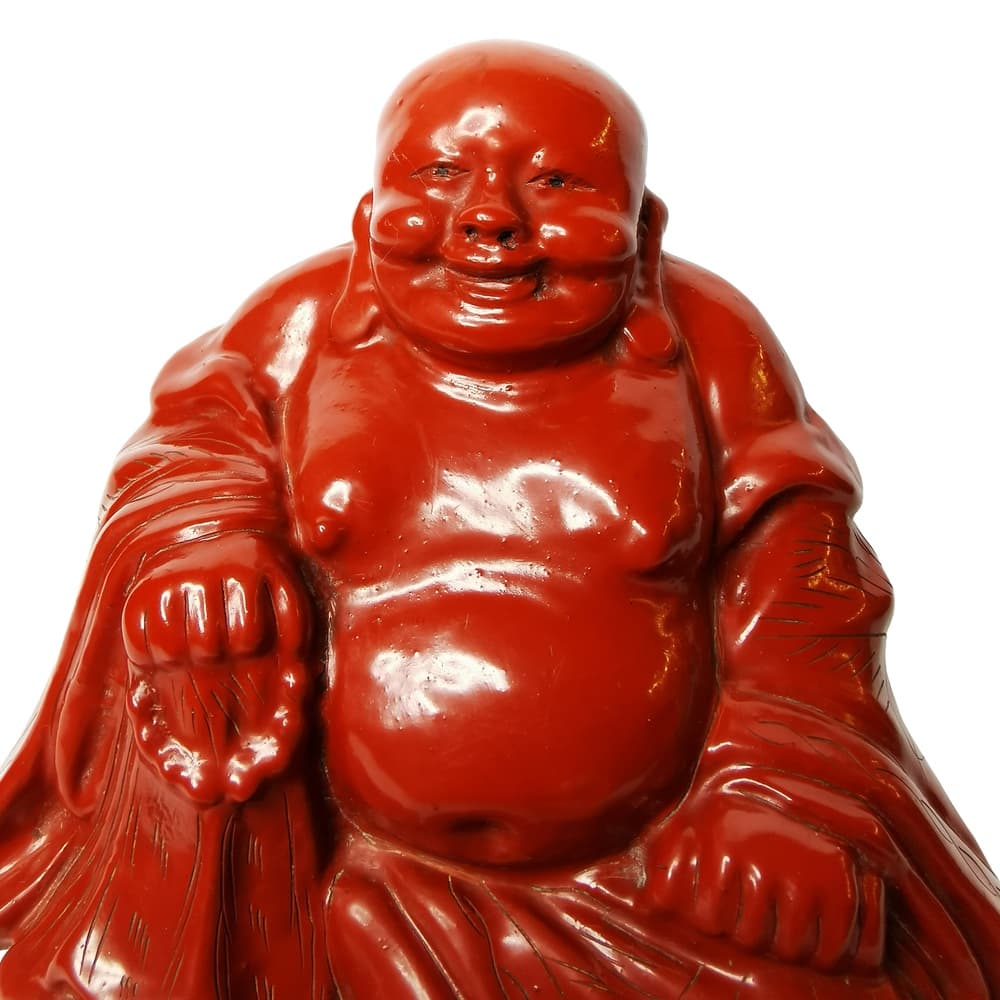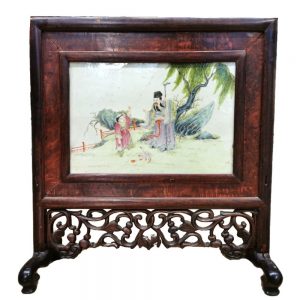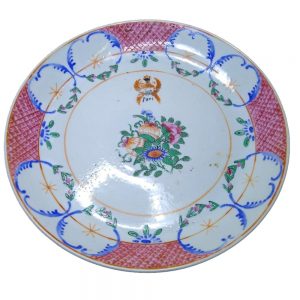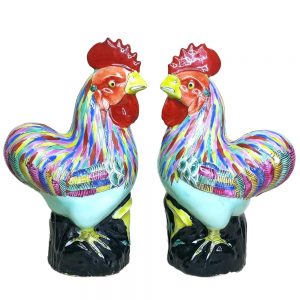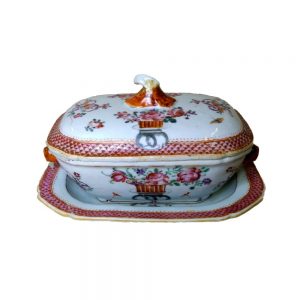Description
Antique Chinese ceramic Happy Buddha with Lacquer, 20th century.
Dimensions: 12.0 X 8.0 X 7.5 cm.
History of Lacquer:
Lacquer is a type of hard and usually shiny coating or finish applied to materials such as wood or metal. It is most often made from resin extracted from trees and waxes and has been in use since antiquity.
Asian lacquerware, which may be called “true lacquer”, are objects coated with the treated, dyed and dried sap of Toxicodendron vernicifluum or related trees, applied in several coats to a base that is usually wood. This dries to a very hard and smooth surface layer which is durable, waterproof, and attractive in feel and look.
Asian lacquer is sometimes painted with pictures, inlaid with shell and other materials, or carved, as well as dusted with gold and given other further decorative treatments.
Carved lacquer or Qidiao (Chinese: 漆雕) is a distinctive Chinese form of decorated lacquerware. While lacquer has been used in China for at least 3,000 years, the technique of carving into very thick coatings of it appears to have been developed in the 12th century CE.
Though most surviving examples are from the Ming and Qing dynasties, the main types of subject matter for the carvings were all begun under the Qing dynasty, and the development of both these and the technique of carving were essentially over by the early Ming. These types were the abstract guri or Sword-Pommel pattern, figures in a landscape, and birds and plants. To these some designs with religious symbols, animals, auspicious characters (right) and imperial dragons can be added.
Lacquer was among the luxury products often given by the emperor as diplomatic or political gifts, or to the subsidiary courts of princes of the imperial house.
History Happy Buddha:
Happy Buddha (Budai or Laughing Buddha) has origins centered around cult worship and local legend. He is traditionally depicted as a fat, bald monk wearing a simple robe.
He carries his few possessions in a cloth sack, being poor but content. He would excitingly entertain the adoring children that followed him and was known for patting his large belly happily.
His figure appears throughout Chinese culture as a representation of both contentment and abundance. Budai attracted the townspeople around him as he was able to predict people’s fortunes and even weather patterns.
A recovered death note dated to 916 or 917 CE, which the monk himself wrote, claims that he is an incarnation of Maitreya, the Buddha of the Future.
A Laughing Buddha (Happy Buddha) is the ultimate symbol of happiness, taking away any problem, symbolizing good fortune, wealth in private and career, life fulfillment.
The Laughing Buddha has become a deity of contentment and abundance, when adopted by religious Taoists and Buddhists.
Budai is almost always represented as carrying a cloth or linen sack, which never empties, hence he became the ultimate symbol of happiness and wealth.
Antique Chinese ceramic Happy Buddha with Lacquer – It is an excellent and collectible piece.
Code: C422



